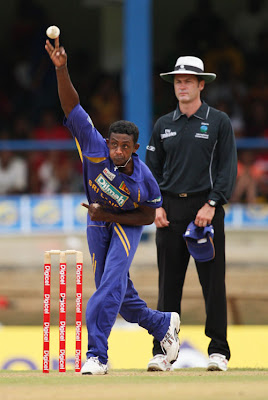Gideon Haigh's biography of Iverson painstakingly unearths the story of a talented misfit

Steven Lynch
October 18, 2008
Suddenly "mystery spin" is back in the cricket news, thanks to Ajantha Mendis of Sri Lanka. Mendis' mesmerising carrom delivery, flicked out by a finger curled up underneath the ball, has only been seriously attempted in international cricket before by a couple of Australians: there was John Gleeson, for a few years from the late 1960s, and a generation before that, there was Jack Iverson.
Big and awkward, Iverson couldn't bat, and he couldn't field. He was mentally fragile, convinced that he could never get certain batsmen out, and easily discouraged. All round, as his biographer claims, he was probably the worst pure cricketer ever to play at the highest level.
But what Iverson could do was bowl, mainly using the homespun finger-flicking method he'd honed by fooling around with a table-tennis ball, and he was remarkably accurate with it. In his one Test series, against England in 1950-51 when he was already 35, he took 21 wickets at 15.23, confounding several decent players of orthodox spin. In a short first-class career - 34 matches over five seasons - he claimed 157 wickets at less than 20 apiece. Many judges, Richie Benaud and Keith Miller among them, thought that Iverson would have won Australia the 1953 Ashes series (they eventually lost it 0-1), but worried by what he thought was a loss of form, Iverson had played only twice for Victoria in the preceding home season.
Such a short career doesn't, on the face of it, seem to warrant a biography running to nearly 400 pages. If the writer was anyone other than the erudite Gideon Haigh, you'd be worried by the admission that he never met Iverson, who committed suicide in 1973, and never saw him bowl (mind you, they did go the same school). Others might have resorted to listing the matches Iverson played and reeling off tedious club performances, but that's not the Haigh style, fortunately. He spoke to everyone he could who had seen Iverson play. He tracked down his daughters (one of whom wasn't terribly co-operative at first) and his sister. And he looked up obscure articles in the Tarrengower Times (reading every edition from 1934 to 1936, the years when Iverson was working nearby) and the Romsey Examiner. At the end you really feel you know this mystery man. The whole thing is a delight, a gripping (no pun intended) read, and an object lesson to anyone tempted to try their hand at biography.
From the book:
"I was offered myriad examples of Jack's cricket naivety, particularly in the field. Apparently, he sometimes had difficulty remembering the names of fielding positions - Lindsay Hassett would have to point out where he wanted Jack to stand. He also found elusive the understanding that fielders should move in as the bowler approached - he preferred to stand still, and rarely tried to stop a ball running either side of him.
On the field, he sometimes said things that to lifetime cricketers sounded a little strange. Bill Johnston recalls how, during the first Shield match he played with Jack for Victoria at the Adelaide Oval in November 1950, Jack came up to him between overs while Lance Duldig was batting and said: 'You've got to get this fellow out, Bill.'
'Hang on,' Johnston replied. 'You've got eight balls in your over, same as I have.'
'Well,' said Jack, 'he got a century against us last time.' Johnston walked away wondering at the assumption that a batsman who'd scored a century once would naturally do so again.
[But] no-one ever seems to have been too fussed by Jack's idiosyncrasies, and no-one told a story against Jack more often than Jack himself."
Mystery Spinner: The Story of Jack Iverson
by Gideon Haigh
Text Publishing, 1999














